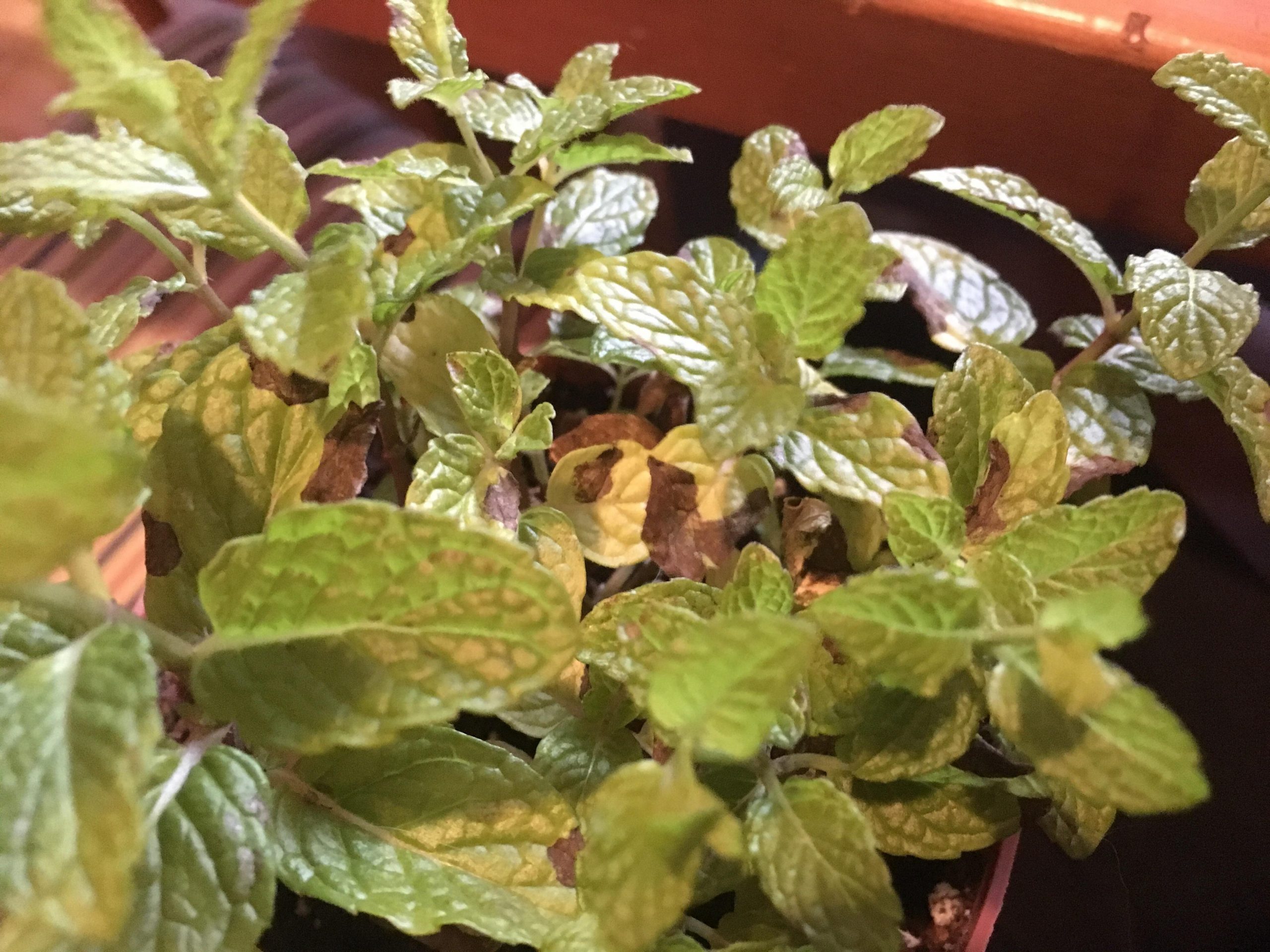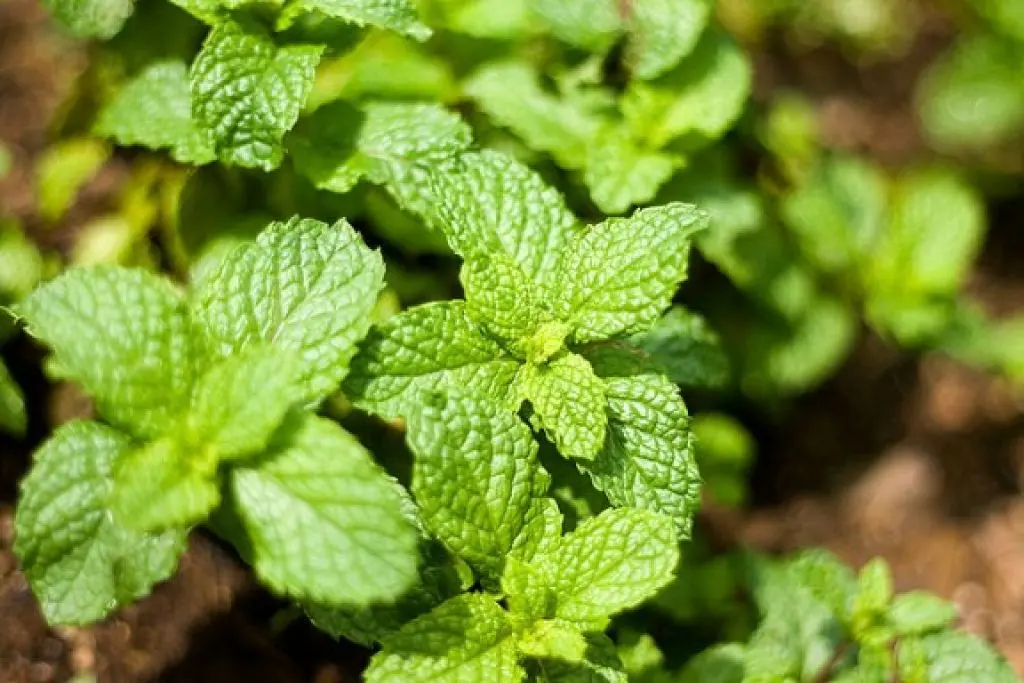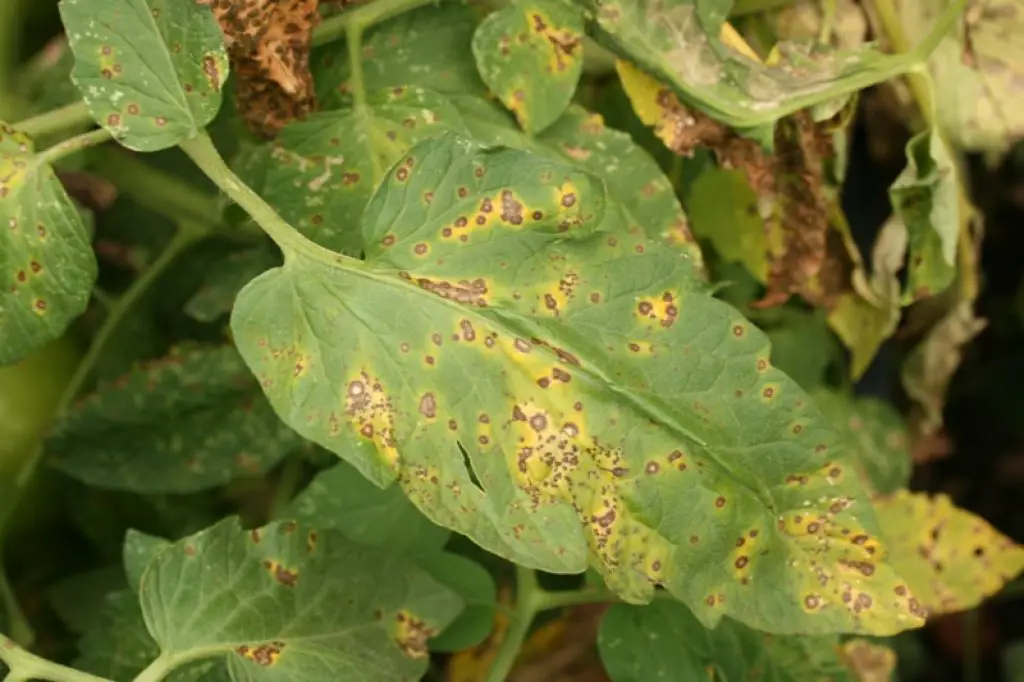Mint Leaves Turning Brown: Reasons With Remedies

Special thanks to the fresh mint leaves for adding heavenly scent and flavor to our food menus. But not to those leaves which are turning or turned brown.
What it means is, brown mint leaves indicate some abnormalities they go through. As a home grower, you must understand what your plant wants to say.
Chances are your mint leaves turning brown and you don’t know why it happens. If this is the thing, don’t fret. Because we are here with 5 most common reasons for browning mint leaves with effective remedies.
So, without further ado, let’s just dive in. Shall we?
Are Brown Mint Leaves Edible?
If this question pops up in your mind, then the answer is ‘it depends’. Because brown mint leaves are the results of various reasons.
In simple words, if the brown mint leaves are the results of fungal attacks or any disease, you can’t eat them. Also, you can’t keep them near the other plants.
On the other hand, if it is a result of humidity or watering reasons, then you may undo the brown effects by taking some actionable steps. So, in such cases, you may take the leaves in your food or beverages.

What Causes Mint Leaves Turning Yellow or Brown?
Well, before proceeding with the methods on how to get rid of brown mint leaves, we want to take a break here. Because you need to know the reasons why this is happening before you look for the solutions.
So, let’s check a shortlist of the most common causes of brown mint leaves:
- Overwatering
- Septoria Leaf spot
- Mint rust
- Powdery mildew
- Nutrient deficiency
Done looking over the reasons? Let’s move into the symptoms and solutions in detail.
How to Get Rid of Yellow Mint Leaves?
In this section, we will discuss the reasons for yellowing mint leaves in a very detailed manner and provide you some quick solutions that will be in rescue.
Overwatering
Mint leaves prefer moist soil but it definitely has to be well-drained. So, you must water them regularly, but you can’t overdo it. Overwatering is one of the biggest causes of yellowing mint leaves.
If we say that the brown leaves are the sign of stress, then the stressor is likely water here. The most common symptoms of overwatered mint plants are having yellow leaves that will turn brown over time, weak stems, and eventually droopy leaves.
The root of all is ‘what does overwatering mint plants mean?’ Well, If you water your mint plants once every 1-2 days when it is not summer, then yes, this is overwatering.
How to Prevent Overwatering Mint Plants?
The best way is, to begin with picking off the bad leaves. When you’re done, start following a routine of watering a bit less for your plants.
The main reason for watering less is since it is not summer, water may not evaporate enough as well as surround the plants and roots. So, it’s better to decrease both the amount and frequency of watering.
What you can do is to water once every 3 to 4 days in case the environment seems humid enough.
But if you grow mint plants in pots or containers, then you need to water them more often than if you grew them in-ground. Because the mint plants in containers get only one water source and that is you. If they grew in-ground, they could get water from nature too.
So, here ‘more often’ means probably every single day. But you have to do it only if the soil is not moist. How to check this? Well, just stick a finger into the soil (where the stems are meeting the ground). If you feel that the soil is moist, then you can water them.
Septoria Leaf Spot
Another major cause for browning mint leaves is a fungal disease named ‘septoria leaf spot’. ‘Septoria lycopersici’ fungus is responsible for this one of the most damaging mint diseases.

The very first symptoms of this disease on mints consist of browning and turning black. The brown spots are usually 3mm and angular-shaped.
The fungus spores live on the mint debris or weeds which are fallen on/in the soil. It can spread to your plants through wind and water. The most favorable temperature for developing the septoria leaf spot is 60-80 degrees Fahrenheit.
The worst-case scenario is the whole plant becomes defoliated and the aboveground parts die.
How to Get Rid of Septoria Leaf Spot?
To help you get rid of the septoria leaf spot, we have compiled here both treatment and prevention. Let’s have a look:
Treatment
- Remove all of the infected leaves. Before you work with the uninfected leaves, make sure to wash both hands thoroughly.
- Use organic fungicides (better-using potassium bicarbonate or copper-based fungicides). Start spraying whenever you observe any of the symptoms and to continue management, stick to the label instructions.
Prevention
- Do not forget to dispose of the affected plants. Once you’re done with disposing of them, restart with a 100% clean garden and disease-free seeds.
- Septoria leaf spot can rear its ugly head if you overwater the mint plants. So, avoid overwatering.
- Make sure of perfect air circulation.
- Mulching below your plants will help to prevent any spores remaining on the ground.
- Try to plant the next year’s mint in another different part of your garden. If your garden is too small to rotate the plants, then make sure of perfect clean up as well as sanitation.
How to Get Rid of Mint Rust?
We have rounded both cultural and chemical control against mint rust right here. Let’s check them out.
Cultural Control
Be very careful when you see any of the symptoms. Before the black resting spores form and contaminate the soil, you need to remove the affected plants. Also, you will need to remove any infected rhizome.
Another important method to get rid of mint rust is ‘Heat treatment’. Though this method is especially used for commercial nurseries, also, it can be adapted for home gardeners.
To go through the ‘Heat treatment’ you need to:
- First of all, wash rhizomes properly in early autumn
- Immerse the washed rhizomes in hot water at 44 degrees centigrade for at least 10 minutes
- Cool it in the cold water
This heat treatment will work if you can make sure that you use an accurate thermometer. Because 44 degrees centigrade is near to the lethal temperature for the plant.
Chemical Control
Sorry to say that if you plant edible mints, then there is no fungicide to treat rust on your mint leaves.
But if these are ornamental mint species, you can apply spectracide 100507462 immunox multi-purpose fungicide. This will work most effectively at preventing new infections.
Powdery Mildew
Initially, powdery mildew can cause a powdery, gray fungus to grow on the mint leaves. Over time, leaves will turn brown and eventually fall off.
Powdery mildew may form when lighting is low, your plant foliage is dry, and when there are adequate temperatures and high humidity.
It generally grows in the late spring/early summer, especially while evenings are somewhat humid and still cool whereas the days start getting warm.
So, what harms can powdery mildew do to your mint plants?
If you leave it untreated, this disease will cause leaching nutrients from your plant which will result in the leaves browning.
Over time, powdery mildew will reduce the capacity of your plant’s production as well as affect the flavor of your mint leaves.
How to Get Rid of Powdery Mildew?
Once you observe the disease symptoms, you need to treat it using fungicides.
Treatment
- To vanish the infection of susceptible plants (soft, newly grown leaves are more susceptible) use copper or sulfur-based fungicides. Spray the whole plant thoroughly at 7-10 days intervals until the day of harvest.
- When you first observe the signs of disease, mix 1-2 tbsp of Green cure fungicide with 1 gallon of water, then apply this mixture to all the exposed surfaces of the mint plant. This product contains potassium bicarbonate that is usually used in food products. Moreover, it can ensure up to two weeks of residual protection.
Prevention
- To evolve air circulation, stake, or prune your plants. But make sure that you disinfect the pruning tools once each cut is done.
- Remove and destroy the affected foliage from your plant and also clean up any fallen debris from the ground.
- Both clean and rake the soil and then use organic compost or mulch to cover the soil. Mulch will work for preventing the diseased spores from moving back onto mint leaves.
- Another effective home remedy for powdery mildew is milk spray (40% milk plus 60% water). To get the best result, use this spray every 10-14 days as a preventive measure.
- For disrupting the daily spore-releasing sequence, wash foliage using Neem oil on a schedule (7days). It will work great to prevent any fungal attack on indoor plants.
- Try to water at the beginning of the day as your plants get a chance to dry throughout the day. Using soaker hoses or drip irrigation systems will keep foliage dry.
- Avoid using excess nitrogen. Using a slow-release organic fertilizer can work more effectively.
- Once you’re done with harvesting, you must destroy the plant debris instead of composting them.
Nutrient Deficiency
Nutrient deficiency can lead your mint leaves to turn brown. It usually happens where the plants can not take up nutrients present in the soil because of the poor growing conditions.
In detail, if the soil is in very alkaline or acidic conditions, or if in waterlogging or dryness conditions, then the plant will face difficulties to take up soil nutrients.
The most common symptoms of nutrient deficiency are leaf yellowing/browning, poor flowering, stunted growth, etc.
Nitrogen Deficiency
Mint is a leafy plant and it responds very well to nitrogen. The possible reason for nitrogen deficiency can be like roots have been damaged in the transplant process.
For this, the plant will take more time to regrow the fine feeder roots that supply nitrogen to the plant. However, in the very first place, older leaves at the bottom of the plant start yellowing (after a few days, they start browning) whereas the remaining leaves are light green.
For your kind information, if the issue is the deficiency in the soil, then it will not resolve itself.
You can add a soon of Miracle-gro all-purpose to 2 liters of water and then pour around half of that on the root zone. It will work great to get rid of nitrogen deficiency.
Potassium Deficiency
Potassium plays a very important role to make your plant able to fight against the disease. You will easily recognize the deficiency of potassium in your plant seeing the brown edges of the leaves.
Why does potassium deficiency occur?
Well, it may occur because of the improper soil pH, excessive liming, or lack of soil oxygen. 6-6.5 is the best range of pH for your plants.
A natural effective way to raise the level of potassium is to bury banana peels just an inch below your soil’s surface. Also, you can apply seaweed, manure extracts as well as potash sulfate.
The FAQs About Mint Leaves Turning Brown
Q: Should I cut off brown leaves?
If the leaves are brown due to any disease, you should cut them off and destroy them too. But if it is for the age of the leaves, then it’s not necessary to cut them off.
Q: Does mint like the sun?
Yes, Mints need morning sun as well as afternoon shade.
Q: Is underwatering responsible for browning mint leaves?
Yes, it is. The symptoms of overwatering and underwatering are almost the same (leaves turn brown and wilt). But if you underwater the plants, the dead leaves will seem dry and crispy whereas for overwatering, the dead leaves will remain limp and soft.
So yes, this is all we stored for you. We hope that by reading this article, you now know why your mint leaves turning brown and how you can possibly fix it.
Before we wrap up, we would like to suggest you take extra care of your plants. No, we are not saying you to grow an extra eye, but be careful about the maintenance from the very beginning.
However, now you can troubleshoot, go for it.
Read More Plant Health Tips:
- Problems with Blue Lake Pole Beans
- Strawberry Plants Leaves Are Turning Brown
- Types of Worms in Potted Plants
Good luck!








